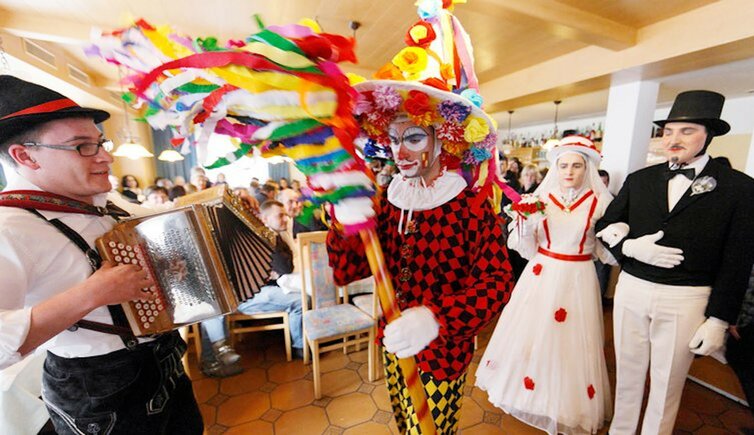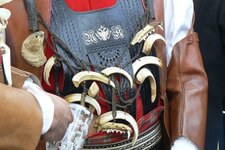Since ancient times, the “Maschger” and the “Zussl” of Prato allo Stelvio have appeared during the craziest time of the year
Image gallery: Proder Maschger - Carnival in Prato allo Stelvio
The "Proder Maschger" belong to a very old tradition of the Val Venosta valley. On Carnival Sunday and Shrove Tuesday the group, made up of eight couples and the "Bajaz", their companion in a colourful outfit, perform in the village centre of Prato allo Stelvio. The couples represent a man and a woman, a farmer and his wife, each time a man and a woman from Styria, Tux and the Zillertal valley, a Moor couple, a gipsy couple and a couple named "Zoch" and "Pfott". This group of 17 people, accompanied by musicians, strolls from one tavern to the next, ragging and dancing.
According to some researchers, the custom should date back to the time of the Habsburg Monarchy, whereas others assume that the move represents a wedding procession with bride and groom and the invited guests, or even a dance of the dead. The single characters are played only by men. Only once, in 1966, some women took part in the move, but it raised a fierce protest.
And so every year during Carnival, Prato allo Stelvio attracts many visitors and invites to party with the mythical "Proder Maschger". Some days before, on Fat Thursday, however, the traditional "Zusslrennen" takes place. Boys and men from the village dress up as "Zussl", a legendary character which drives away winter. They are dressed all in white and decorated with colourful flowers and bows. Their belts - made up of cowbells and other bells - can weigh up to 20 kg.






































